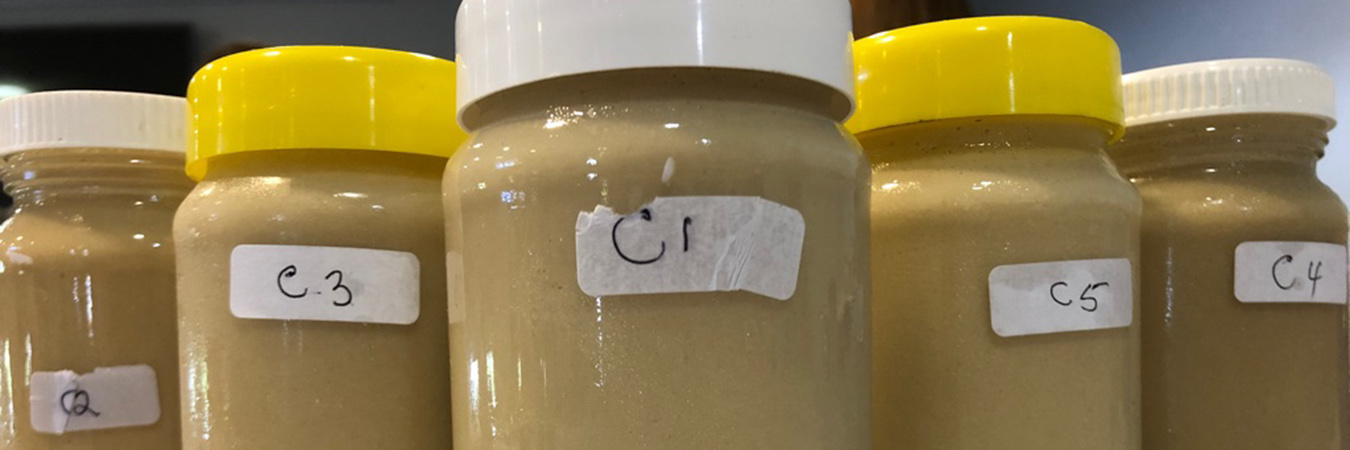Crystallisation or granulation occurs naturally in most honeys as, over time, honey in its liquid form changes in texture to a solid candied or soft creamy state with a range of fine to coarse grains. This natural phenomenon is key to producing high quality creamed and candied honeys. Honey is made up of two principal sugars – glucose and fructose – in solution with water. Crystallization is a process in which the glucose molecules form crystals with some of the water molecules. Fine creamed honey is produced by controlling the quality of starter, or seed, crystals used to initiate the crystallisation process.
Candied honey
There are two classes: fine and coarse grain. Fine grain floral types include lucerne and clover. Eucalypts tend to be coarse grain. Fine grain candied honey should be fine and almost indistinguishable on the palate and tongue.
To achieve an even granulation 10-15% ‘starter’ is mixed with the liquid honey you wish to granulate. The starter is honey that has previously been granulated. Mix the starter and liquid honey at 18-24 degrees celsius until the whole mix is the same colour and consistency, incorporating as little air as possible.
Leave the mix at 14 degrees celsius for 12-36 hours. Pour it into containers before it sets firmly, pouring on the side of the container to prevent air bubbles. Store at 14 degrees celsius for 3 weeks to allow setting.
The mix should set firm, but be easy to spread. The colour should be off-white to cream, this is determined by the starter and the floral honey source.
Creaming honey
A fine grain starter must be used and the final product should be spreadable and very fine grained. The mixing of the starter into the liquid honey is done such that air is added to the mix. Creaming machines are available from beekeeping supply stores. Alternatively, a dough mixing or motorized mincing machine may be used. Don’t use a standard household hand mixer or low power stand mixer as the honey is too dense and the motor will overheat.
Three major considerations affecting the quality of honey crystallisation include:
- floral origin of the nectar – Generally, honeys with a naturally high glucose/fructose ratio (like canola, lucerne, mugga ironbark, caley’s ironbark, blue top ironbark, narrow-leaved ironbark, white box, etc.), will crystallize more rapidly than honeys with a relatively low glucose/fructose ratio, (like yellow box, red stringybark, etc.)
- controlling for fermentation – use only fully ripened honey with a low water content
- controlling the crystallisation process – source either a honey which naturally crystallises to a fine grain or a starter batch of candied or creamed honey from another beekeeper to act as your ‘starter’.
Video
Bruce White, international honey judge, explains how to make and judge cream and candied honey.
Acknowledgements:
- R Owen (2015) The Australian Beekeeping Manual. Exisle Publishing, Wollombi NSW, Australia
- This article was written by Bruce White and reviewed by Liz Frost and Nadine Chapman.


